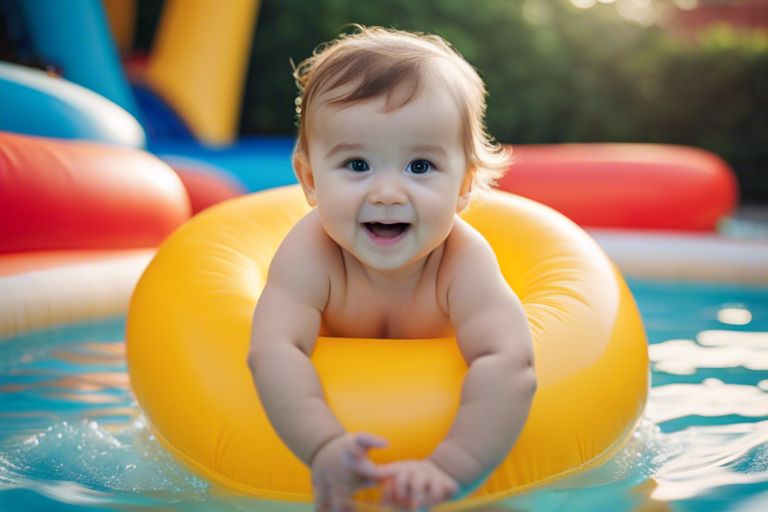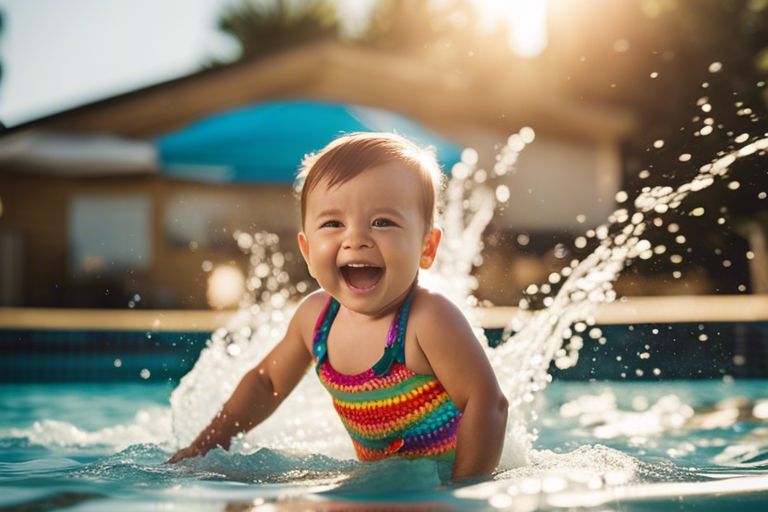It’s necessary for parents to understand the effectiveness of swim diapers in preventing leakage during pool time. While swim diapers are designed to contain solid waste, they may not always be completely leak-proof. Factors such as fit, material, and proper use play a significant role in their functionality. This blog post will examine into the intricacies of swim diapers and provide insights into how to maximize their leak-proof potential.
Key Takeaways:
- Swim diapers are designed to hold in solids, not liquids: Swim diapers are not leak-proof in terms of urine. They are meant to prevent solid waste from leaking out and contaminating the pool.
- Regular diaper vs swim diaper: Regular diapers are designed to absorb and hold liquids, while swim diapers are made of different materials that do not absorb water but are effective in containing solid waste.
- Proper fit is key: Ensuring a snug and secure fit of the swim diaper is important to minimize the chances of leaks. Be sure to choose the right size and adjust it properly before your child enters the water.
Understanding Swim Diapers
Definition and Purpose
The main purpose of swim diapers is to contain solid waste while your baby is enjoying the water, whether in a pool, lake, or ocean. Unlike regular diapers, swim diapers are designed to be worn in water and should not swell up like traditional diapers, thereby providing a comfortable and secure fit for your little one.
Different Types of Swim Diapers
On the market, there are two main types of swim diapers: disposable and reusable. Each type has its pros and cons, so it’s imperative to choose the one that best suits your needs. Below is a breakdown comparing the two types:
| Disposable Swim Diapers | Reusable Swim Diapers |
|---|---|
| Convenient for travel | Eco-friendly option |
| Easy to use and dispose of after one wear | Can be cost-effective in the long run |
| Less bulky | Adjustable sizing for a better fit |
| May not be as environmentally friendly | Require washing after each use |
| Good for occasional use | Can be more durable |
Swim diapers are an imperative item for any parent with a young child who loves the water. Whether you opt for disposable or reusable swim diapers, ensuring that your baby is comfortable and protected while swimming is key. Remember to always follow the manufacturer’s instructions for the best fit and performance.
Functionality of Swim Diapers
Materials and Design
Some swim diapers are made from breathable, waterproof materials with snug-fitting leg cuffs and waistbands to prevent leaks. The designs often include adjustable closures for a secure fit while allowing freedom of movement for little ones.
Effectiveness in Water
An important feature of swim diapers is their effectiveness in containing solid waste without swelling or becoming waterlogged. The snug fit and specialized materials ensure that accidents are contained, providing peace of mind for parents during pool or beach outings.
One must remember that while swim diapers are excellent at containing solid waste, they are not a substitute for regular diaper changes. It is necessary to check and change the diaper frequently, especially after extended time in the water, to maintain a hygienic environment for the baby.
Comparing Swim Diapers and Regular Diapers
Keep
| Swim Diapers | Regular Diapers |
| Contain solids but allow liquids to pass through | Designed to absorb and contain both solids and liquids |
| More lightweight and trim for ease of movement | Bulky and may swell when wet |
Structural Differences
Diapers and swim diapers have different structures. Swim diapers are created to contain solid waste but allow liquid to pass through, preventing them from swelling like regular diapers when in the water.
Situational Suitability
Any parent will know that choosing between swim diapers and regular diapers boils down to the situation at hand. While regular diapers are suitable for everyday use and designed to keep both solids and liquids contained, swim diapers are a must-have for pool or beach outings to prevent any embarrassing leaks in the water.
Maintenance and Best Practices
Proper Usage Guidelines
Guidelines for using swim diapers include ensuring a snug fit around the waist and legs to contain any leaks effectively. Change the swim diaper immediately after it becomes soiled, and never reuse a wet swim diaper.
Cleaning and Storage
To maintain the effectiveness of swim diapers, it is important to rinse them thoroughly after each use and wash them with a mild detergent. Store clean, dry swim diapers in a cool, dry place away from direct sunlight to prevent deterioration.
Additionally, avoid using fabric softeners, bleach, or harsh chemicals when cleaning swim diapers to preserve their waterproof abilities and prevent skin irritation on your baby’s delicate skin.
To wrap up
Ultimately, swim diapers are designed to contain solid waste and minimize the risk of leaks while your child is in the water. However, they are not completely leak-proof and may not hold in urine. It’s important to check them regularly and change them as needed to avoid any accidents. Remember to always follow proper swim diaper guidelines to ensure a fun and hygienic swimming experience for everyone.
FAQ
Q: Are swim diapers leak-proof?
A: Yes, swim diapers are designed to hold in solid waste and prevent it from leaking into the water. However, they are not designed to hold in urine like regular diapers, so some leakage may occur.
Q: How do swim diapers work?
A: Swim diapers have a snug fit around the legs and waist to contain any solid waste. They are made of water-resistant materials that do not swell up in water, like regular diapers. This allows for easy movement in the water while preventing any accidents from spoiling the pool.
Q: Are reusable swim diapers as effective as disposable ones?
A: Reusable swim diapers are just as effective as disposable ones when it comes to holding in solid waste. They are eco-friendly and cost-effective in the long run. However, it is vital to follow the manufacturer’s washing instructions to maintain their effectiveness and ensure they remain leak-proof.


